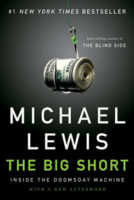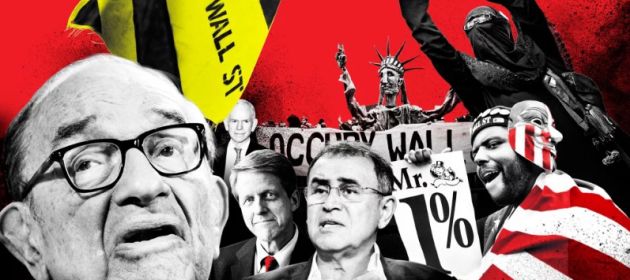On the tenth anniversary of the bankruptcy of Lehman Brothers, the media is full of articles questioning why nobody went to jail for the Great Financial Crisis that followed. Take, for instance, A crisis nobody went to jail for.
 According to most of these articles, the GFC happened beause of greed, laziness, cronyism and cheating by banks.
According to most of these articles, the GFC happened beause of greed, laziness, cronyism and cheating by banks.
In seeking to explain why nobody went to jail, we can straight away toss out greed, laziness and cronyism – they’re not crimes.
While cheating is a criminal offence, banks and financial institutions are arguably not guilty of this charge.
According to Michael Lewis’s bestseller “The Big Short” and many other accounts, the GFC was triggered by the following events:
Mortgage originators wrote home loans to Americans eager to achieve the “American Dream” of home ownership, FIs packaged the mortgages into Mortgage Backed Security and sold it to other FIs, who packaged MBS into Collateralized Debt Obligation and sold it to some other FIs, who packaged CDOs into CDO-square, and … . All the while, Credit Rating Agencies were sleeping at their watch.
On and on it went and loans were packaged into more and more fancy structured financial products and sold by one financial institution to another. It was product innovation at its best.
Borrowers were happy because they could buy bigger houses. FIs were happy because they earned fat fee income at every stage. Business was booming.

According to the popular narrative, financial institutions hid the toxic nature of their assets. But that’s simply not true. Instead they disclosed the exact composition of their structured financial products to Credit Rating Agencies. They needed to do this in order to get their products rated, which was a a prerequisite for selling them to other financial institutions. If anything, banks revealed too much, not too little. CRAs still gave these products AAA or AA ratings.
There are many theories to explain the gross incompetence of CRAs.
One of them is that CRAs missed what Malcom Gladwell called “the sleazy stuff in footnote 42” of the applications forms they received from banks.
But I find the explanation given in The Big Short most plausible, even if somewhat politically incorrect. Michael Lewis believes it was simply a case of the mediocre getting outwitted by the excellent. According to him, the assets were created by investment bankers who graduated at the top of their class from Ivy League universities whereas the ratings were carried out by analysts at CRAs who graduated at the middle of the class from Tier 3 colleges. This explanation makes even more sense considering this is not the first time such a thing has happened in the business world and it won’t be the last time either.
In hindsight, these products deserved junk-grade ratings rather than the AAA or AA ratings they got. But, at the time, buyers had every incentive to take the AAA and AA ratings at face value because they could repackage whatever they bought into another product and sell it along to the next guy in the chain. It was like a game of “passing the parcel” – nobody stops to inspect the content of the package or wishes to be caught holding the package when the music eventually stops playing.
It was only when overextended borrowers (9% of the total) started missing their repayments years later that these originally-pristine products started turning toxic.
Banks might have exhibited a blithe attitude, but that’s not a crime. (Apparently some banks colluded with valuation agencies to inflate the prices of homes. That’s a civic – not criminal – offence and many banks did get fined for that. More on that in a bit).
If you want to know what caused the Global Financial Crisis but can't find the time to read Michael Lewis's book "The Big Short" – IMO the movie version won't help – I strongly recommend this tl;dr version by @McKinsey .https://t.co/JqC3dV1lSq
— S.Ketharaman (@s_ketharaman) September 17, 2018
While CRAs were guilty of incompetence in giving high ratings to these products, incompetence is not a crime, either. It’s also perhaps a testimony to the intrinisic complexity of the task of rating that the same CRAs enjoy 94% share of the ratings market even ten years later.
While all this was happening, a few finance industry honchos like Dr. Michael Bury and Steve Eisman pored over the aforementioned prospectuses and spotted the toxic ingredients in the MBSs, CDOs and CDO2s. They rightly predicted that the music would stop imminently and shorted the subprime mortgage market. When their bets proved right, they made a killing.
As for chances of a similar crisis happening in future, Wall Street banks just launched even fancier synthetic products based on Bitcoin. This is not legal advice but there’s apparently still no law to stop them from packaging these products and selling them to one another the way they did last time. So the powder keg is already in place.
What’s missing is the spark. Probably in the interest of political correctness, the media conveniently ignores the role of the consumer in the last GFC. It was the consumer who borrowed more than his or her ability to repay (which is also not a crime). It was the consumer’s default in repayments that set off the whole chain of events that eventually precipitated the last crisis.
Unless the common man takes greater responsibility for their financial actions, I’m afraid, sparks will fly soon.
I’m not alone.
Fortune predicts the same in its recent cover story entitled The End is Near. In another piece titled How to Spot the Next Financial Crisis, the magazine observes, “The main causes of the last crisis—human self-delusion and irrationality—will be the main causes of the next one. If that seems unbearably depressing, cheer up: It tells us what to watch out for.”
The last crisis was undergirded by physical assets in the form of homes. The next one, if and when it happens, will have 1s and 0s floating around in cyberspace.
Contrary to the popular narrative, one person actually went to jail for GFC: Kareem Serageldin, former Managing Director / Global Head of Structured Credit in the Investment Banking Division of Credit Suisse Group. According to Wikipedia, Serageldin “was sentenced to 30 months in prison in connection with a scheme to hide more than $100 million in losses in a mortgage-backed securities trading book at Credit Suisse.”
But, since he was a midlevel functionary in a tier two financial institution, you might still think the industry got away lightly.
That’s not entirely true. According to Wall Street Journal, the six largest US banks have paid at least $110 billion in penalties related to the crisis.
So they didn’t get away scot-free, after all.
